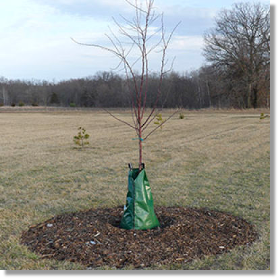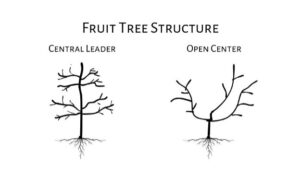From the Vine – Fruit Trees
go.ncsu.edu/readext?1062123
en Español / em Português
El inglés es el idioma de control de esta página. En la medida en que haya algún conflicto entre la traducción al inglés y la traducción, el inglés prevalece.
Al hacer clic en el enlace de traducción se activa un servicio de traducción gratuito para convertir la página al español. Al igual que con cualquier traducción por Internet, la conversión no es sensible al contexto y puede que no traduzca el texto en su significado original. NC State Extension no garantiza la exactitud del texto traducido. Por favor, tenga en cuenta que algunas aplicaciones y/o servicios pueden no funcionar como se espera cuando se traducen.
Português
Inglês é o idioma de controle desta página. Na medida que haja algum conflito entre o texto original em Inglês e a tradução, o Inglês prevalece.
Ao clicar no link de tradução, um serviço gratuito de tradução será ativado para converter a página para o Português. Como em qualquer tradução pela internet, a conversão não é sensivel ao contexto e pode não ocorrer a tradução para o significado orginal. O serviço de Extensão da Carolina do Norte (NC State Extension) não garante a exatidão do texto traduzido. Por favor, observe que algumas funções ou serviços podem não funcionar como esperado após a tradução.
English
English is the controlling language of this page. To the extent there is any conflict between the English text and the translation, English controls.
Clicking on the translation link activates a free translation service to convert the page to Spanish. As with any Internet translation, the conversion is not context-sensitive and may not translate the text to its original meaning. NC State Extension does not guarantee the accuracy of the translated text. Please note that some applications and/or services may not function as expected when translated.
Collapse ▲Growing Fruit Trees in Sampson County: What You Need to Know
Fruit trees can be a valuable and rewarding addition to your home landscape, but they require proper planning and maintenance to thrive. So far in 2025, we’ve received numerous inquiries about fruit tree care, common problems, and the best varieties to plant in Sampson County. From home visits and photos, it’s clear that many homeowners need guidance.
The first question you should ask yourself is: How much time do I have to dedicate to fruit tree care?
Choosing the Right Tree for Your Time Commitment
Fruit trees vary in maintenance needs. Selecting varieties that match your available time can save you frustration down the road.
- Low Maintenance: Figs, persimmons, red mulberries, pawpaws, walnuts, chestnuts, and pecans.
- Moderate Maintenance: Apples, pears, Asian pears, and plums.
- High Maintenance: Peaches and nectarines.
If you’re new to growing fruit trees, starting with low-maintenance varieties is a wise choice.
Selecting the Best Location
A successful fruit tree starts with choosing the right planting site. Keep these factors in mind:
✔ Water Access – Ensure trees are near a water source for easy irrigation.
✔ Good Drainage – Avoid low-lying areas where water collects.
✔ Sunlight – Trees need at least 8 hours of direct sunlight daily.
Soil & Nematode Testing: A Crucial Step
Before planting, test your soil and check for nematodes. Here’s how:
- Soil Testing: Collect samples from two depths: 6-8 inches and 8-16 inches.
- Nematode Testing: These microscopic worms are common in Sampson County’s sandy soils and can kill fruit trees. A simple test can identify harmful levels.
Selecting Healthy Trees
When purchasing fruit trees, choose specimens that are 4-6 feet tall with healthy root systems. Avoid trees that are:
🚫 Stunted or poorly shaped
🚫 Diseased or injured
🚫 Infested with pests
Proper Planting Techniques
Follow these steps for successful planting:
- Dig a hole twice as wide as the root ball but no deeper.
- Check for root girdling and prune circling roots before planting.
- Do NOT add fertilizer to the planting hole.
- Backfill with native soil and water thoroughly.
Fertilizing for Healthy Growth
- Established Trees: Apply fertilizer from the trunk to the drip line.
- Timing: Use a split application – half in late winter (Feb-March), the other half in May.
- Rate: If no soil test was done, apply 1 lb. of 10-10-10 fertilizer per year of tree age, up to a maximum of 10 lbs. per tree.
Pruning for Productivity
Regular pruning is essential for fruit production. Follow these guidelines:
🌳 Central Leader Pruning – Pecan, pear, plum, and apple trees.
🌳 Open Center Pruning – Peach and nectarine trees.
Always remove:
✔ Dead, diseased, or damaged wood
✔ Crossing branches and water sprouts
✔ Limbs touching the ground or sagging below horizontal
Pest & Disease Management
Frequent observation is key to controlling pests. Follow a consistent spray schedule:
- Dormant Season: Apply horticultural or dormant oil (2-3.5 oz per gallon) to control scale and other pests.
- Green Tip Stage: Use a complete fruit tree spray (1.5-2.5 tbsp per gallon) every 7 days until blossoms appear.
- During Bloom: DO NOT spray insecticides to protect pollinators.
- Post-Bloom to Pre-Harvest: Apply the complete fruit tree spray every 14-21 days up to three weeks before harvest.
By following these steps, you can enjoy a thriving fruit orchard with fewer problems. Whether you’re a seasoned gardener or just getting started, the right preparation will set you up for success.
For more information on fruit tree care, soil testing, or pest management, contact the Sampson County Master Gardener Plant Clinic at 910 592 7161.
Properly planted fruit tree with tree watering bag.





